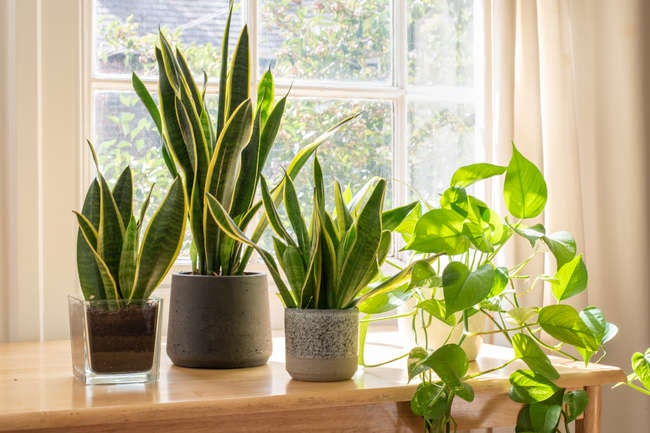

We may earn revenue from the products available on this page and participate in affiliate programs. Learn More ›
Home Advice You Can Trust
Tips, tricks & ideas for a better home and yard, delivered to your inbox daily.
Easy-Peasy Plant Parenting
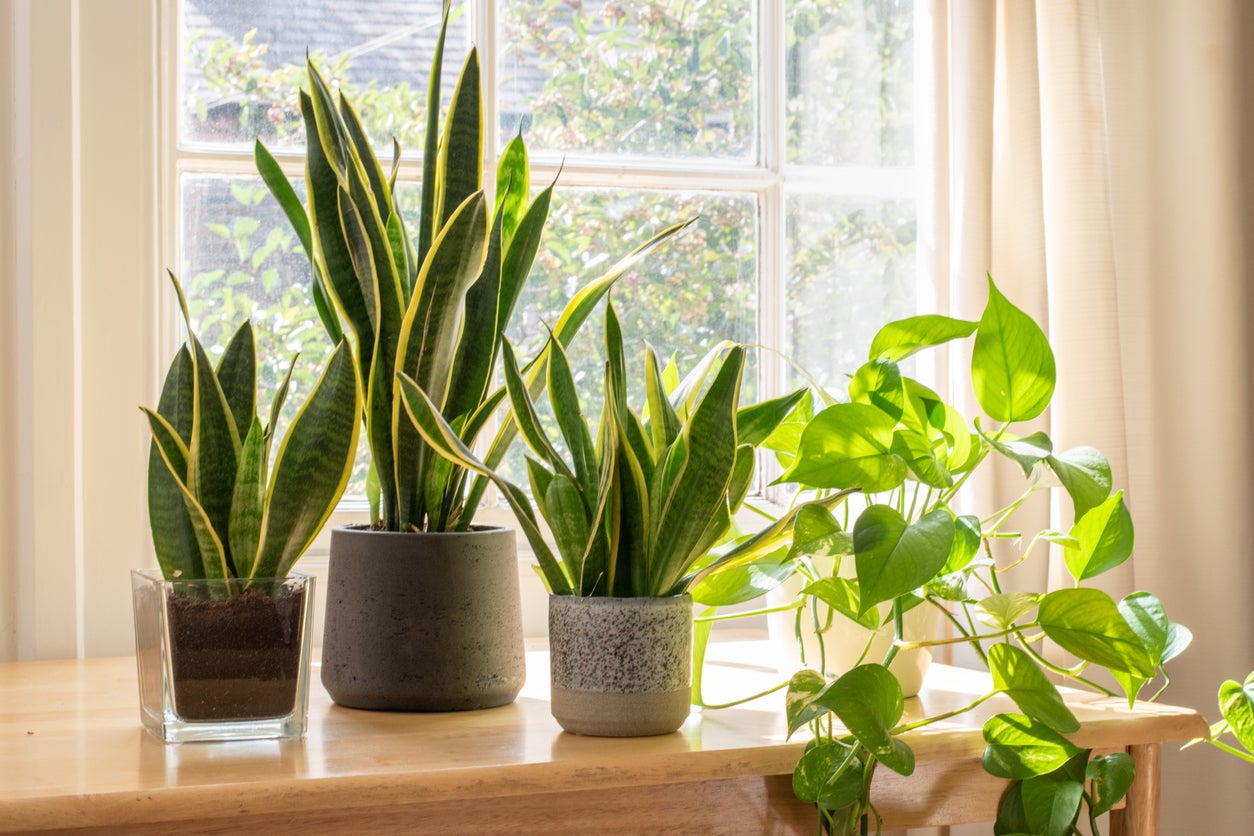
When it comes to low-maintenance houseplants, snake plants top the list. They grow as well in bright light as they do in low light, and they’ll tolerate most watering mistakes. These are perfect plants for those new to caring for plants. And if your busy schedule keeps you away from home for days on end, your snake plants will get along just fine. Be sure to keep them away from mouthy pets, because if pets chew or eat it, the plant is likely to make them sick.
You’ll find plenty of snake plant varieties. The scientific name for this plant is Dracaena trifasciata, and it was formerly known as Sansevieria trifasciata. Both names refer to the same plant, which also might be called mother-in-law tongue or many other common names, depending on the variety. With dozens of easy-care snake plants to choose from, it makes sense to select one with the size and appearance that best complements your decor. Follow along for a look at some of the most popular types.
Dwarf Snake Plant (D. ballyi)
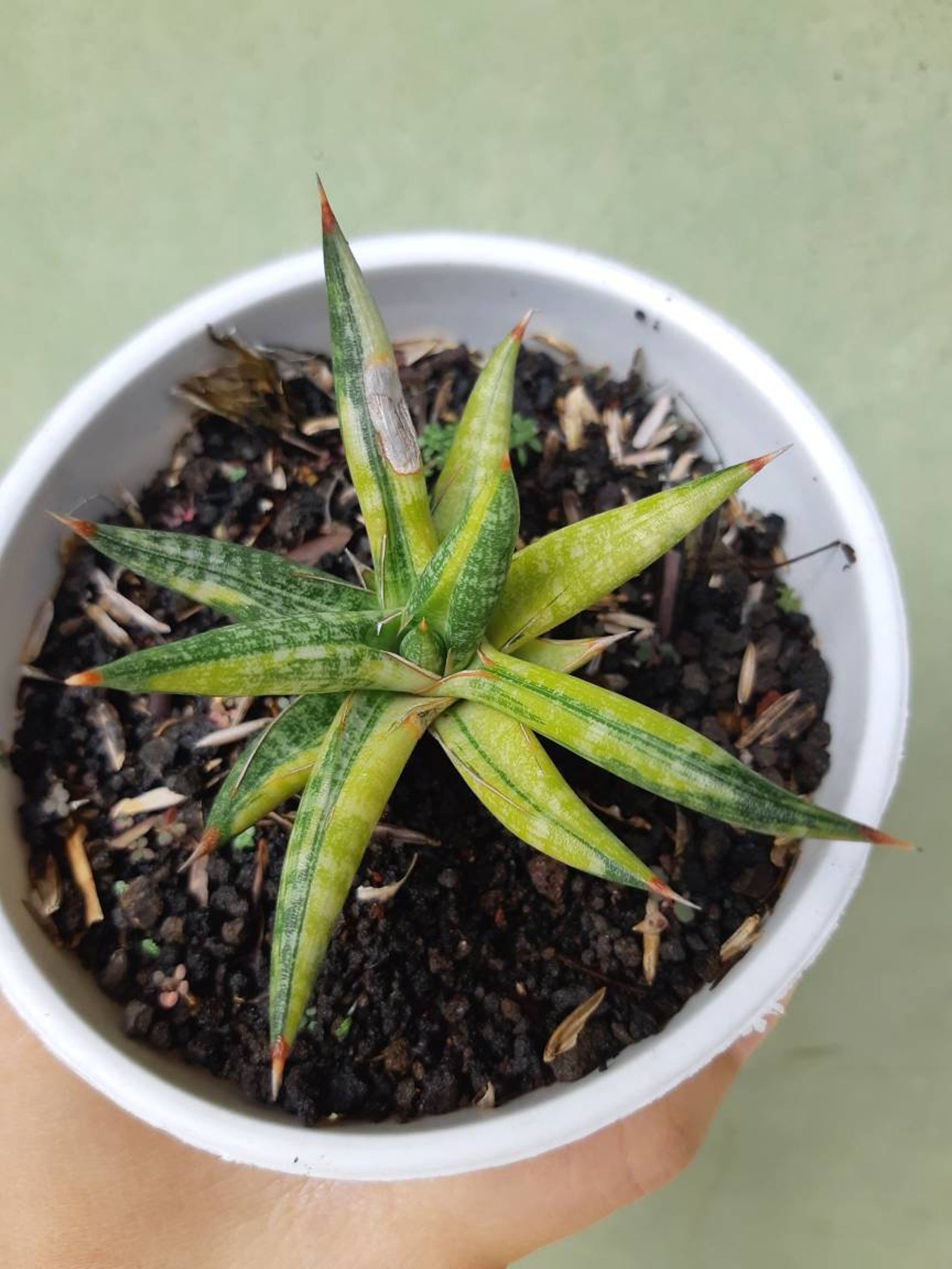
Dwarf snake plants grow 6 to 10 inches tall and wide. Its cylindrical leaves are compressed laterally and grow to about 4 inches long and 1/4-inch thick. The overall appearance of the foliage features green and white stripes. The leaf tip is reddish brown and it has a spine grooved on the face.
In low light, the leaf color tends to fade and the foliage stretches somewhat. In bright, indirect sunlight, this plant, which was formerly called Sansevieria ballyi, sometimes produces showy, pale greenish-white or pale pink flowers. Each blossom is about 1 inch long, and blooms are born in 6-inch-long clusters. Check the soil moisture weekly, and water if it is dry to a depth of about an inch.
Cylindrical Snake Plant (D. angolensis)
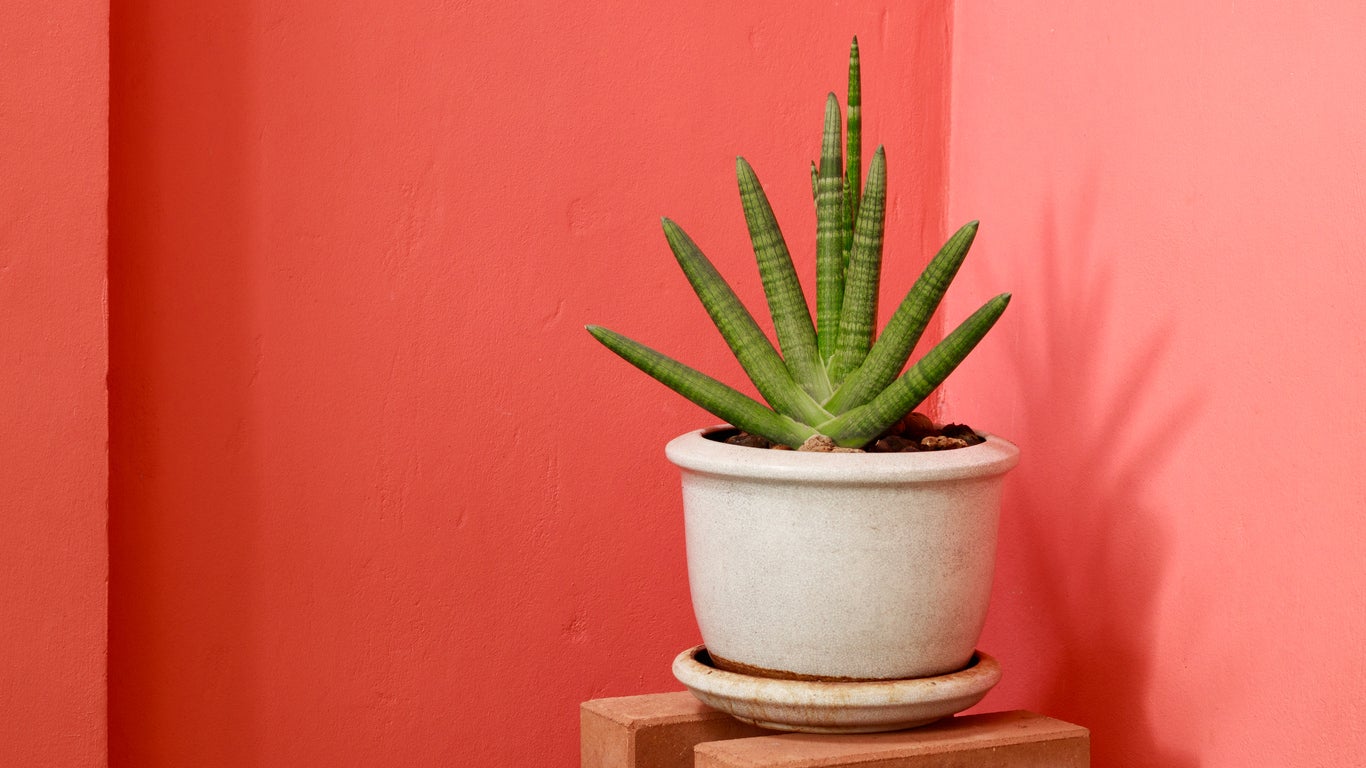
Also known as the African Spear Plant and formerly called Sansevieria cylindrica, this tough plant can grow as high as 4 feet with a spread of up to 1 foot. The foliage features a cross-banded effect of dark green and light green markings. Each of the cylindrical leaves measures about 1 inch across, slowly tapering to a pointed tip. The leaves have shallow channels that run from the base to the tip.
As the leaves mature, they form a gracefully arched, fan-shaped spray. Flower spikes grow from the base of the foliage on older plants. They produce clusters of tubular-shaped greenish-white flowers that have a light fragrance. If they are pollinated, the flowers might give way to small orange-red berries.
Blue Sansevieria (D. hanningtonii)
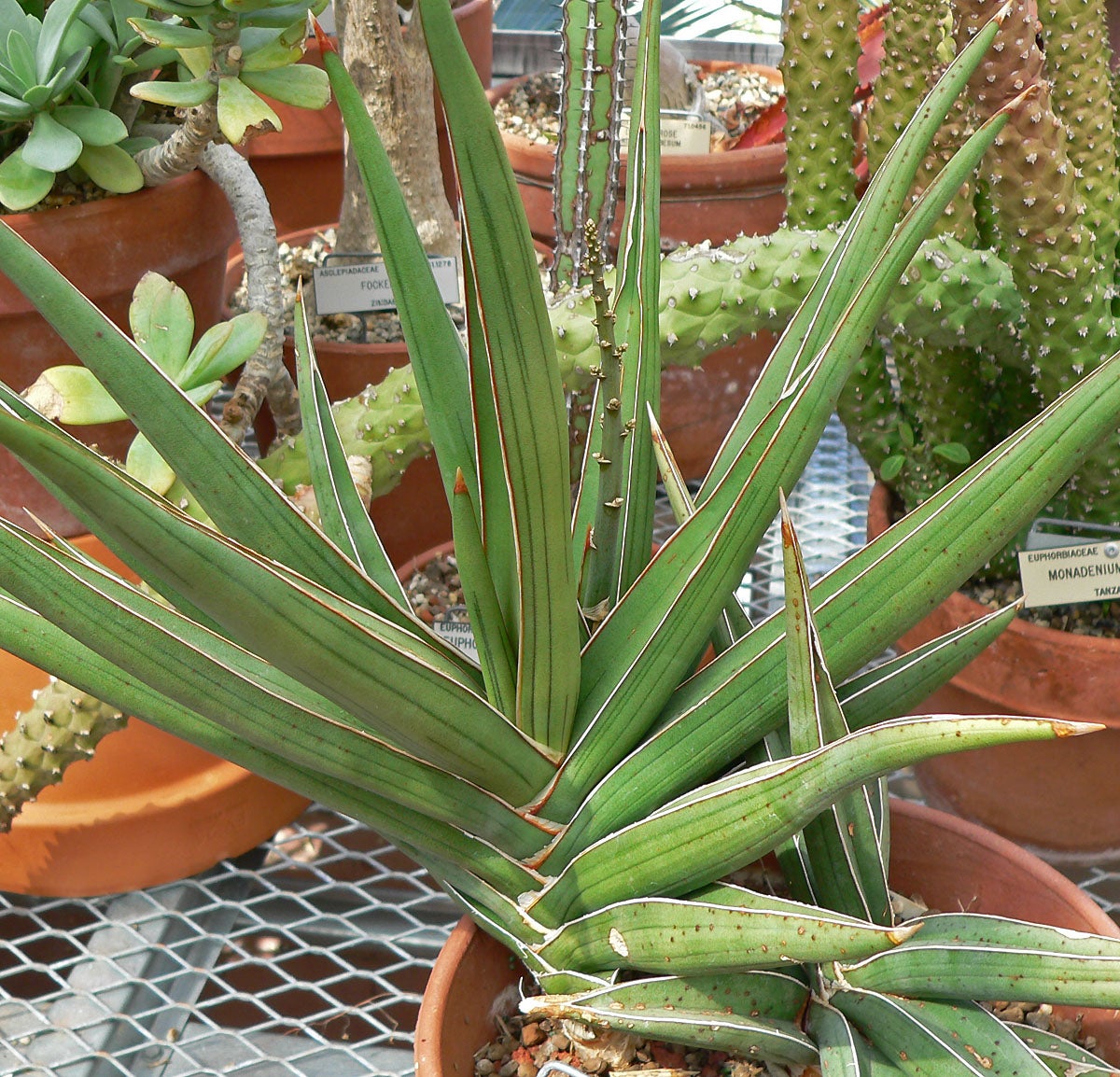
Blue Sansevieria bears its blue-green leaves in two opposing rows, forming a fan shape. This rarer variety still might be tagged or come up in searches with its former name of Sansevieria ehrenbergii or a common name of Sword Sansevieria. With age, it develops a short stem up to 8 inches tall. Mature leaves, up to 5 feet long and 6 inches wide, have a curved cross section with a grooved channel on the upper surface.
Plants grow offsets, sharing a rhizome, to form densely packed clusters. The flowers of Blue Sansevieria are grayish-white or gray-green, tinted with purple. They open at night and have a mild fragrance. The half-inch fruits ripen from green to yellowish, maturing to orange.
Banana Sansevieria (D. ehrenbergii ‘Banana’)
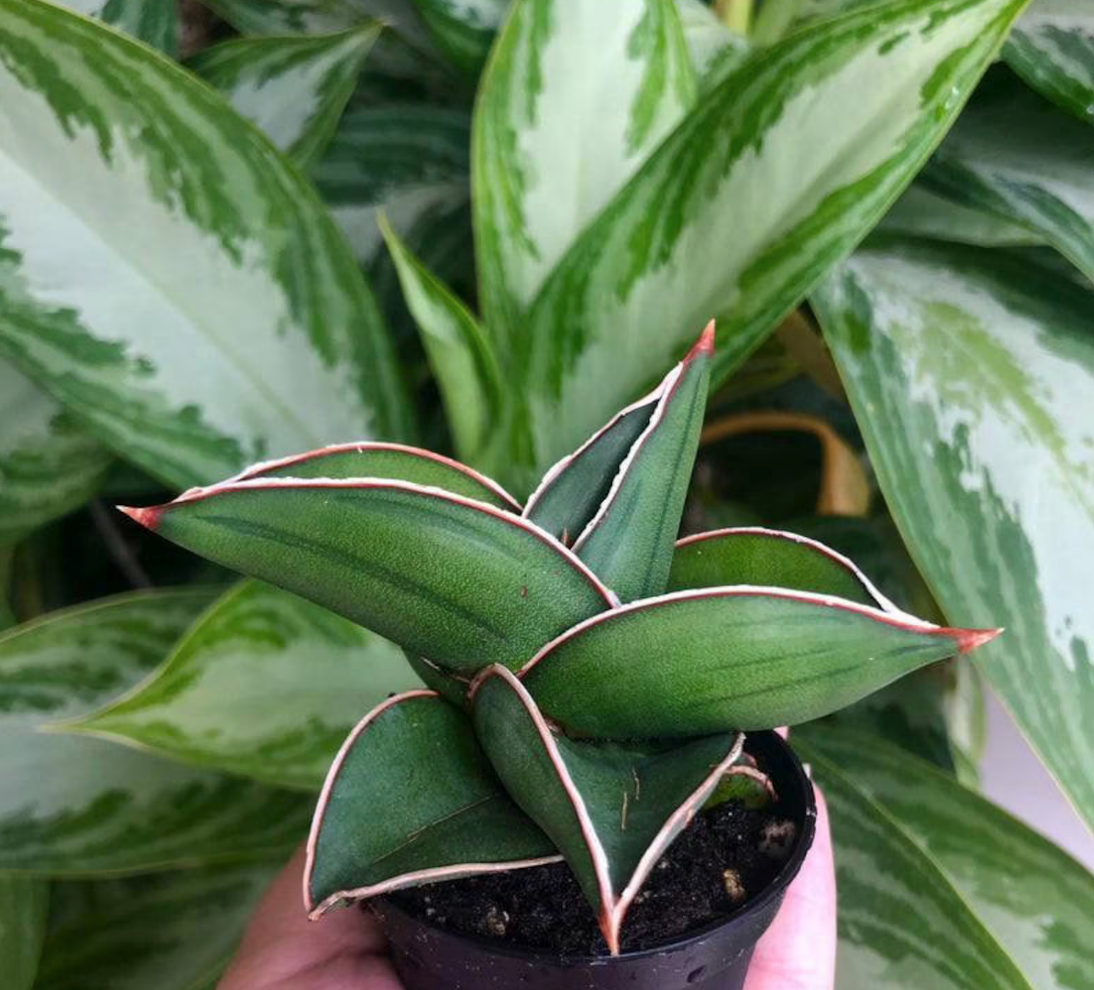
Banana Sansevieria is a low-growing plant with wide, banana-shaped leaves. This compact variety of D. ehrenbergii produces foliage very near the soil line with virtually no stem at all. The foliage is gray-green or blue-green with a reddish margin and deeply channeled on the upper surface.
For the best coloration and most compact growth habit, grow this variety in bright, indirect light. Ideal locations would be in front of north-facing windows or in a room with south-facing windows, but shielded from direct sunlight. It rarely produces flowers. Also look for this less common variety with its new classification as a Dracaena and the telltale banana-shaped leaves.
Star Sansevieria (D. pethera)
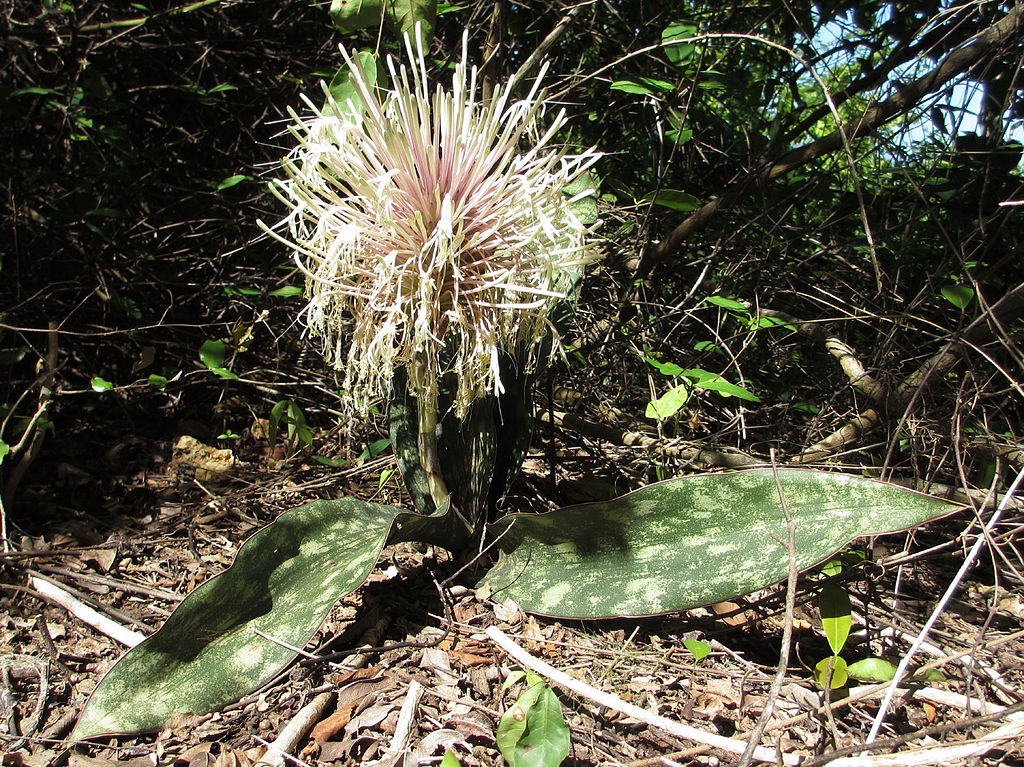
Dracaena pethera, formerly Sansevieria kirkii, produces bold, erect rosettes of flat, stiff leaves. The foliage is mottled in gray-green barring and features reddish, wavy edges. Young plants initially have flat, spreading leaves that become more upright with age. Fragrant, greenish-white 1-inch flowers occasionally arise on spikes at the edge of the foliage.
You likely can find this stunner native to Tanzania under its common name of Star Sansevieria. This snake plant variety prefers moderately bright, filtered light. In lower-light conditions it might take longer for the soil to dry out, so be sure to check before watering.
Cleopatra Sansevieria (D. pethera ‘Cleopatra’)
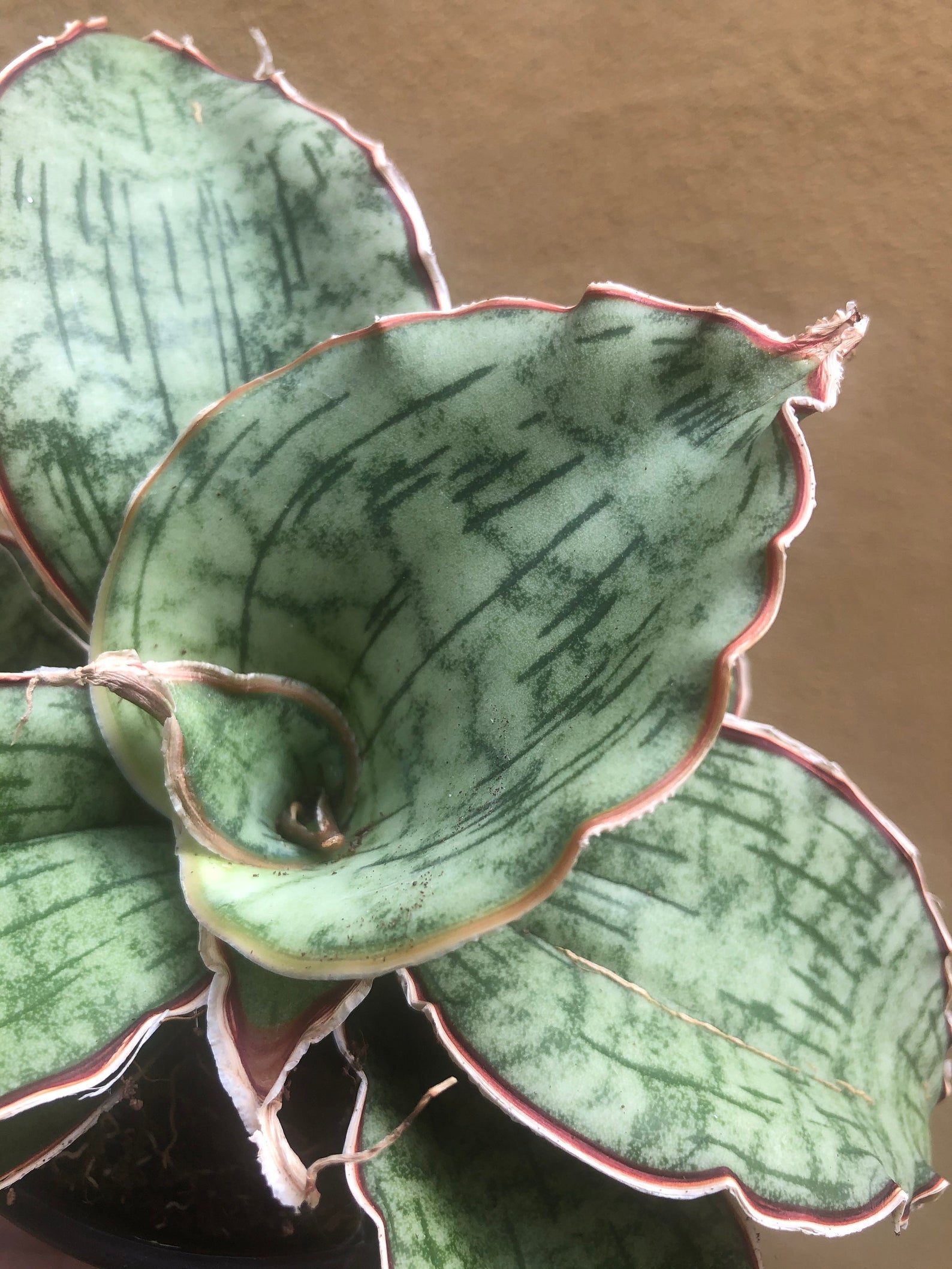
Cleopatra Sansevieria is a compact form of D. pethera (S. kirkii) that features a complex pattern of dark green and creamy white streaking and crossbars on its leaves. Young leaves occasionally take on subtle reddish highlights as well. Cleopatra grows slowly, forming a nearly perfect rosette of foliage.
Plant this and other snake plant varieties in a well-draining potting mix. Cactus and succulent soil is ideal. Use terra-cotta containers to promote aeration and prevent root rot.
Variegated Whale Fin (D. masoniana f. variegata)
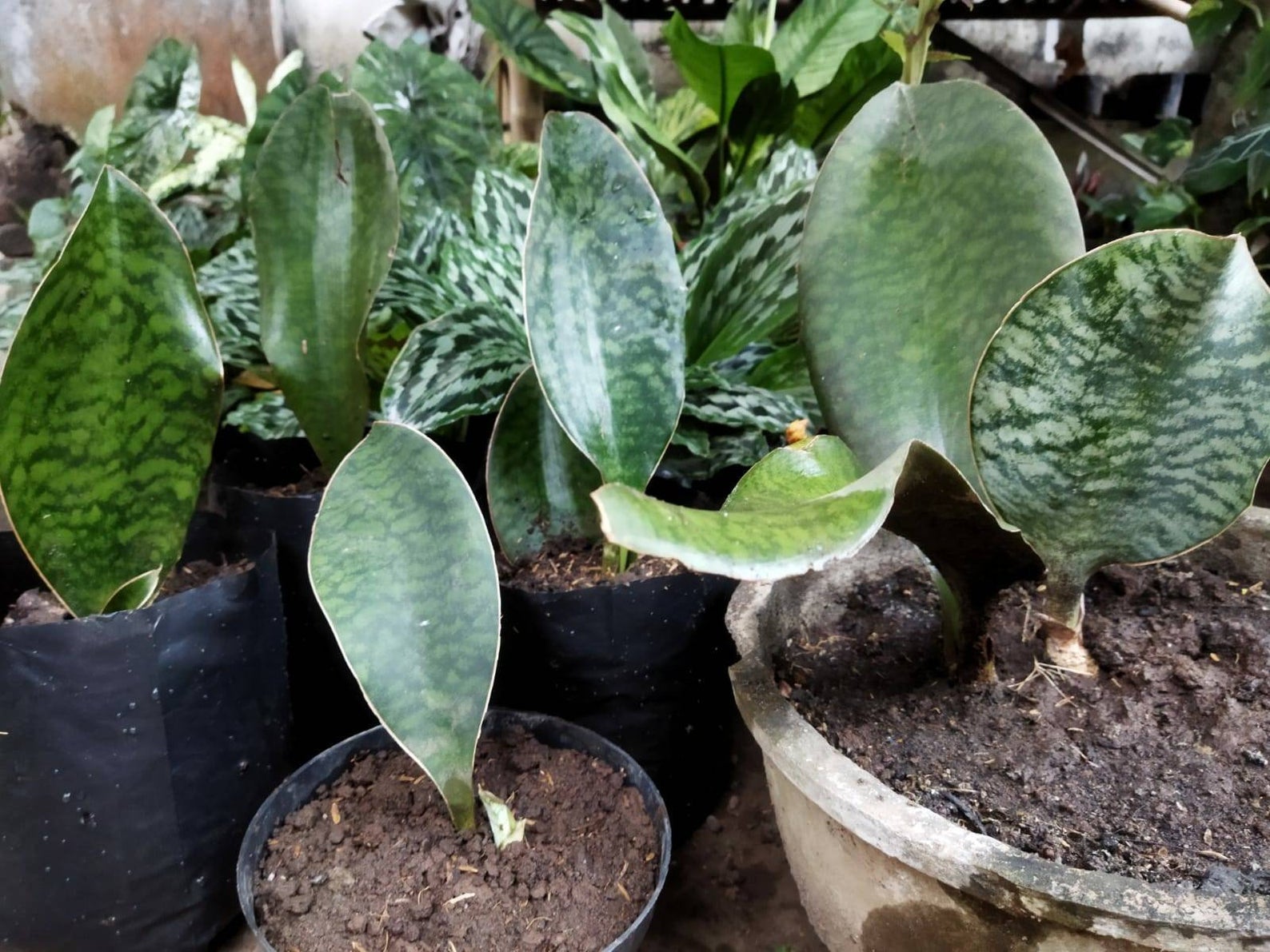
Variegated Whale Fin is the perfect collector’s plant. It is less commonly available and might be listed under its former name of Sansevieria masoniana. This snake plant displays bold variegation on oversize foliage. The leaves have an unusually wide, paddle-like shape with smooth margins.
Variegation appears on the mottled leaves in broad linear streaks of highly contrasting deep green, creamy white, pale green, and pure white. The leaves almost look as if a painter brushed on the color.
Kenya Hyacinth (D. parva)
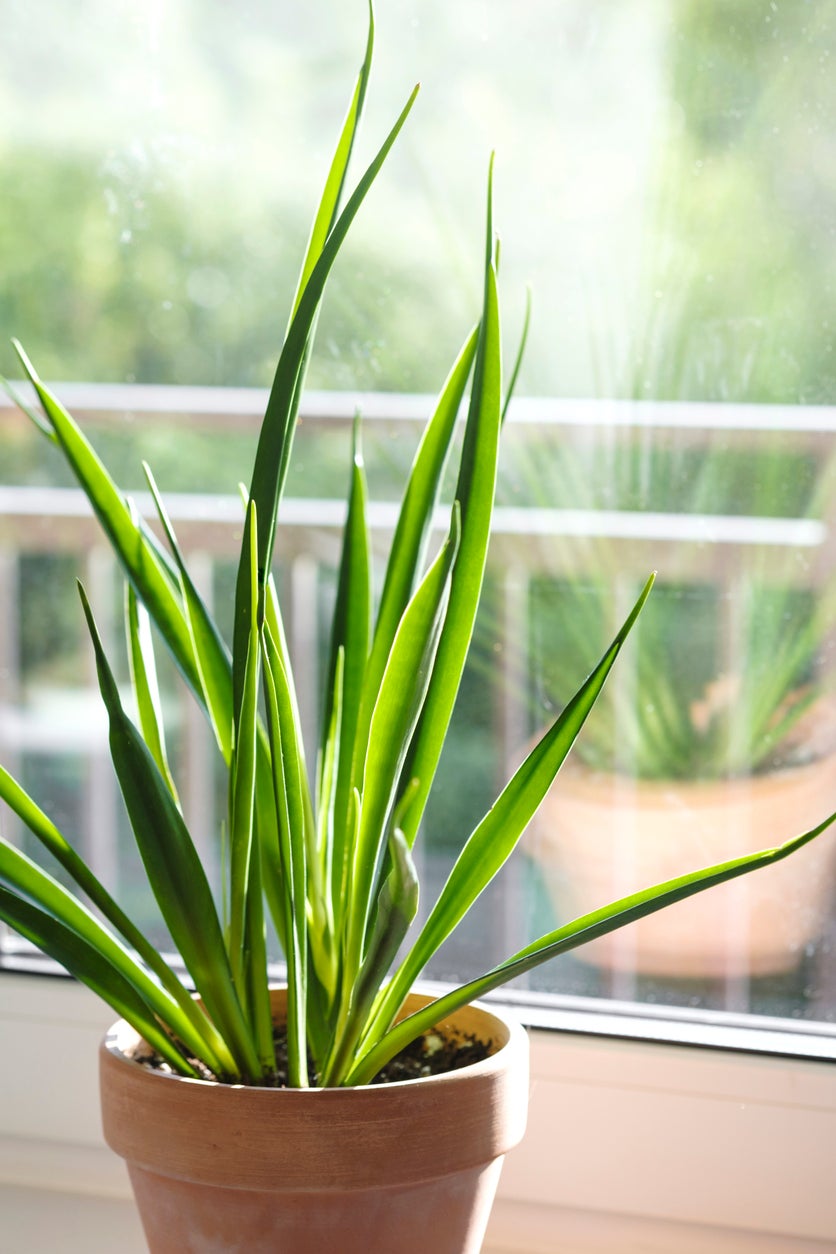
The Kenya Hyacinth, also known as Dracaena parva or Sansevieria parva, is a popular small snake plant variety. It features thick, dark green banded leaves that are 8 to 16 inches long that grow from heavy rosettes. The rosettes produce long runners that end in small plantlets, making them an excellent choice for hanging baskets.
Delicate white or pink flowers grow in clusters on spikes above the foliage. They produce a pleasant hyacinth-like aroma during the night. Propagate Kenya Hyacinth by harvesting and potting up the hanging plantlets.
Snake Plant (D. patens)
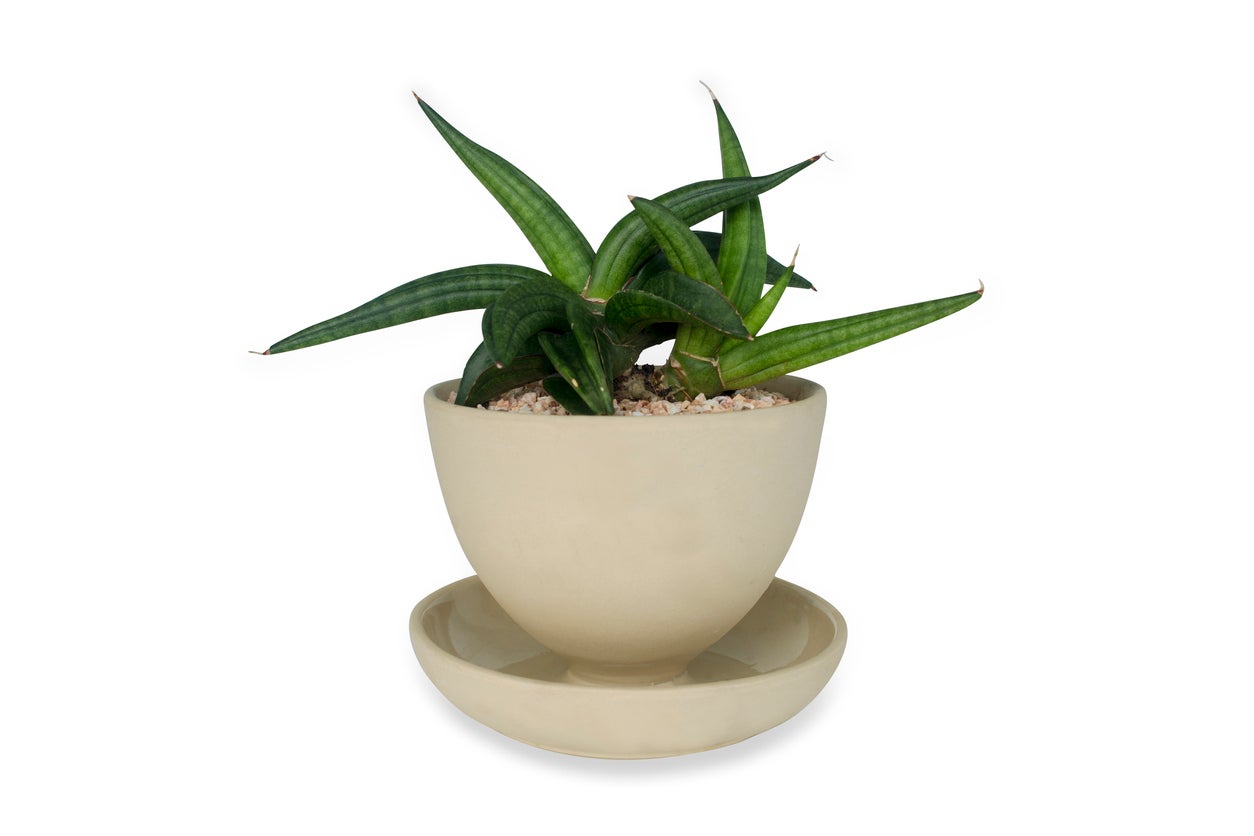
Looking more like its succulent side, Sansevieria patens (now Dracaena patens) is a spreading species that can reach up to 3 feet tall and wide at maturity. The stiff, cylindrical leaves grow to 3 feet long and up to 2 inches wide, tapering to a pointed tip with a central groove running their length.
The mottled foliage of this snake plant takes on gray-green tones with dark green banding. The leaves form an open, fan-shaped rosette. Over time, the plant forms a small colony of the parent plant and its pups.The tubular flowers are creamy white. They appear in clusters at the top of a 16-inch stalk.
Black Gold Snake Plant (D. trifasciata ‘Black Gold’)
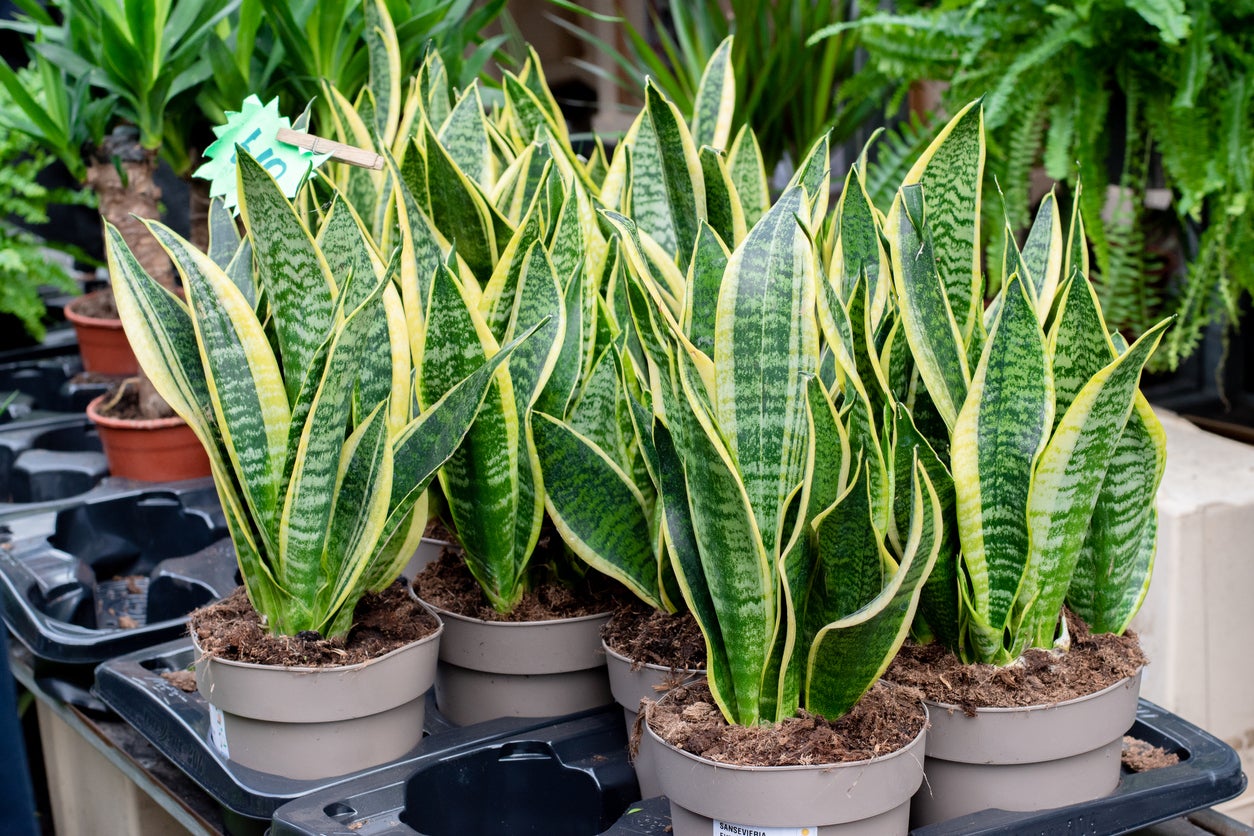
Called Sansevieria trifasciata ‘Black Gold’ and its new name of Dracaena trifasciata, this is the most commonly available of the species in nurseries and garden centers. Black Gold Snake Plant is a popular variety because of its upright form and strong contrasting foliage with just a hint of a wave in the margin.
Each lance-shaped, dark green leaf is bordered by a thick margin of gold variegation. The plants grow completely upright to 3 feet tall and 18 inches wide. Black Gold Snake Plant is a slow grower that performs well in low-light areas. This variety rarely flowers.
Mother-in-Law’s Tongue (D. trifasciata ‘Futura Robusta’)
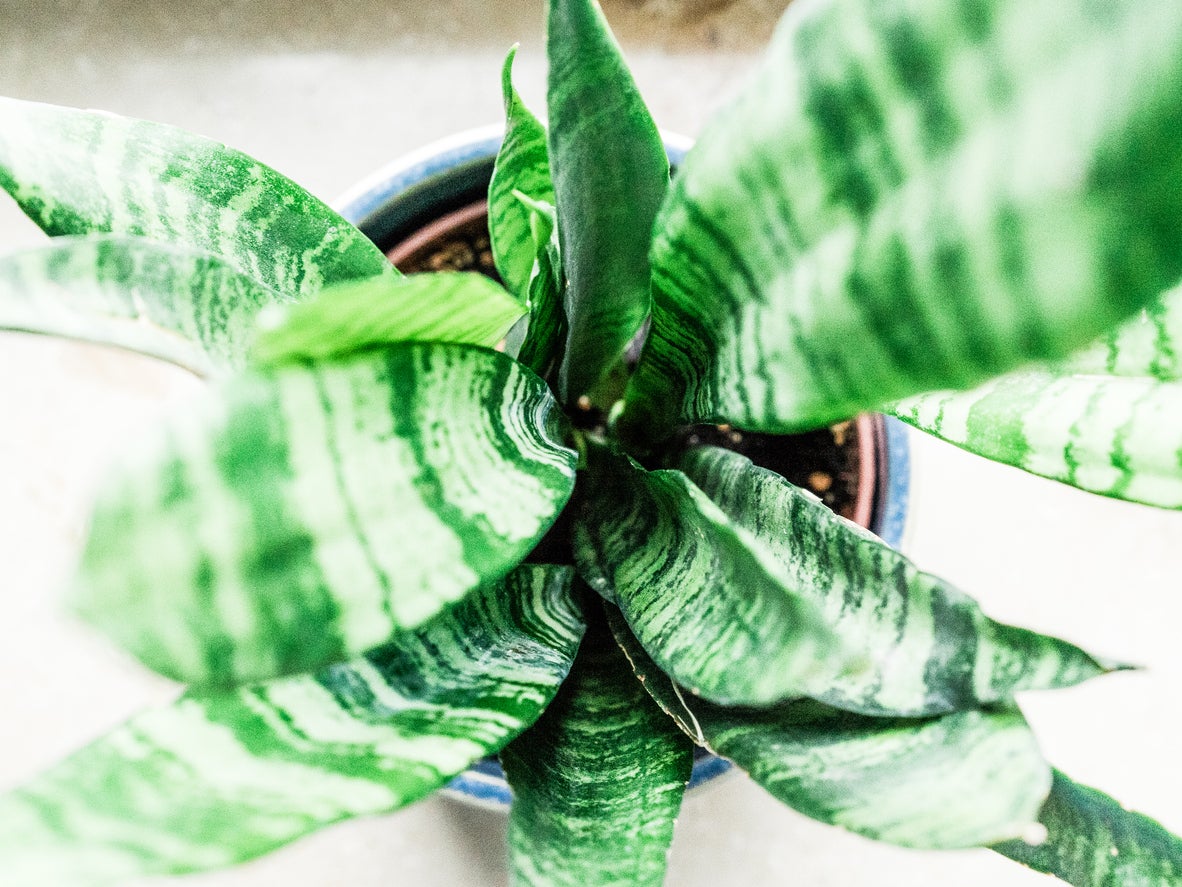
This popular snake plant variety forms dense clusters of vertical foliage rosettes with striking coloration. It features showy grayish-green mottled foliage with splashes of silvery-white and dark green banding. ‘Futura Robusta’ is a compact form of Dracaena trifasciata (formerly Sansevieria), growing to 24 inches high and 12 inches across.
The wavy, twisted leaf margins and upright growth habit of the spear-shaped leaves add to the plant’s ornamental appeal. Rare flowers on this selection are very small and hold insignificant ornamental value.
Variegated Snake Plant (D. trifasciata ‘Futura Superba’)
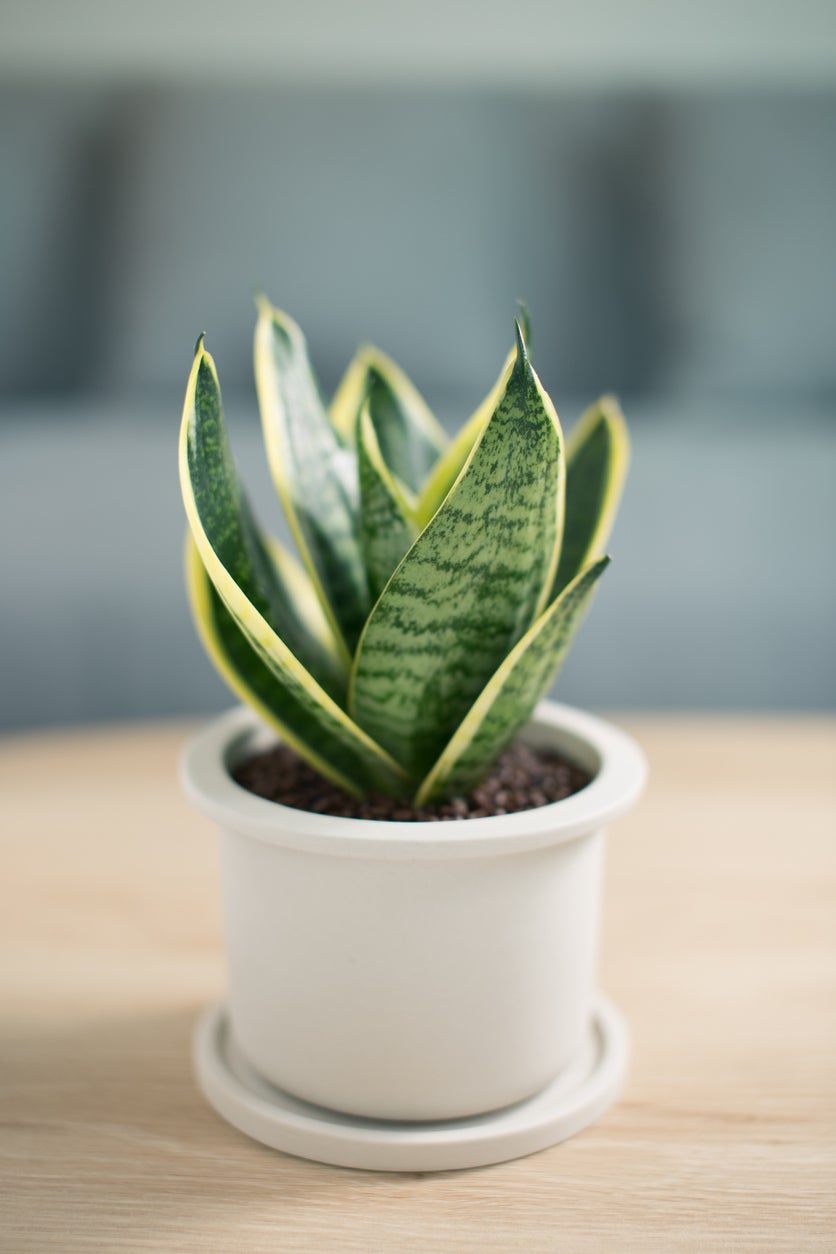
Maxing out at just 12 to 18 inches tall and 10 to 12 inches wide, ‘Futura Superba’ grows just a bit shorter and broader than other popular D. trifasciata (S. trifasciata) snake plant varieties. This dwarf snake plant offers beautiful light green leaves mottled with silver, plus a generous amount of gold variegation at the leaf margins. With its small size, colorful foliage, and easy-care habits, this little snake plant grows and looks great virtually anywhere in the home.
Golden Bird’s Nest Snake Plant (D. trifasciata ‘Golden Hahnii’)
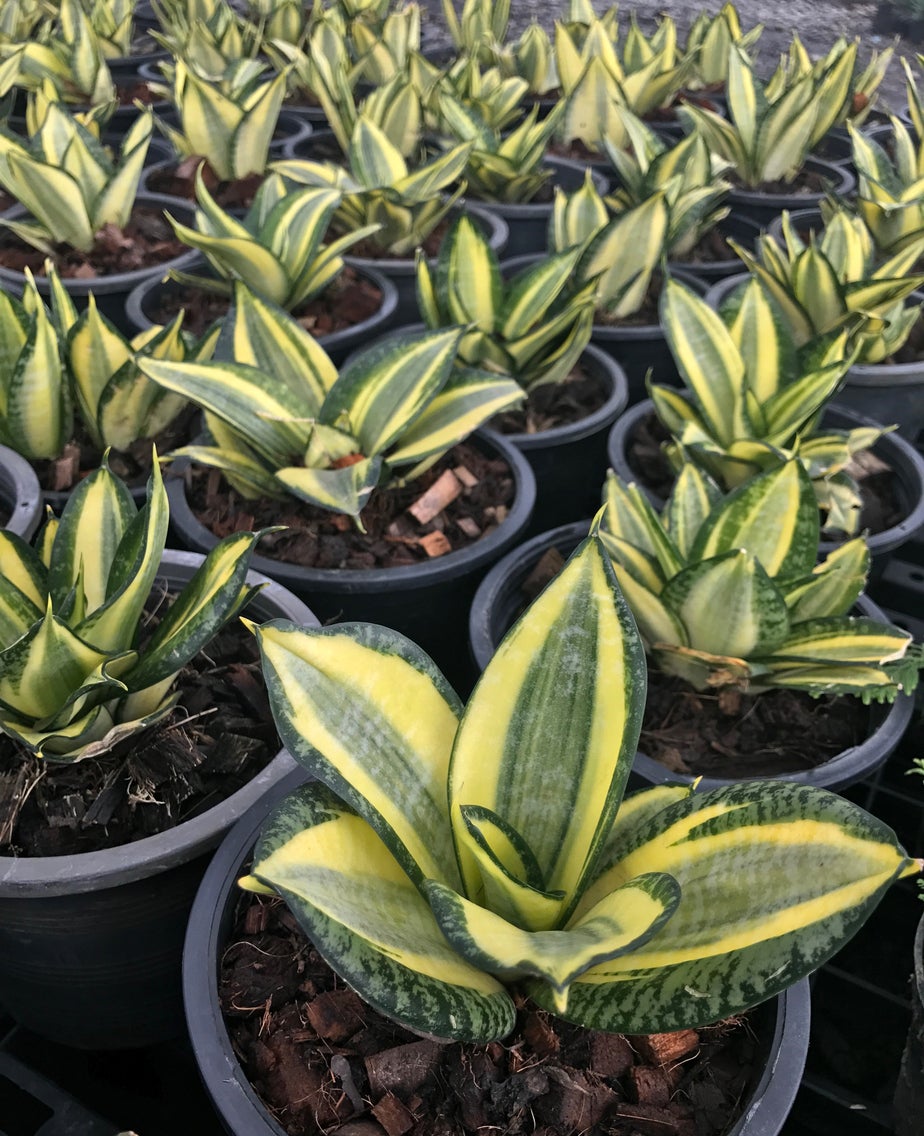
Golden Bird’s Nest Snake Plant produces very short, compact rosettes of golden variegated foliage that look somewhat like a bird’s nest. The gray-green oval leaves with dark green crossbands are bordered with margins of golden yellow, and culminate in a pronounced pointed tip.
The best leaf coloration develops in bright, indirect light. This dwarf snake plant reaches 8 inches tall and 6 inches wide. Look for this variety listed by its new scientific name, its common name, or as Sansevieria trifasciata ‘Golden Hahnii’.
Gold Twist Sansevieria (D. trifasciata ‘Twisted Sister’)
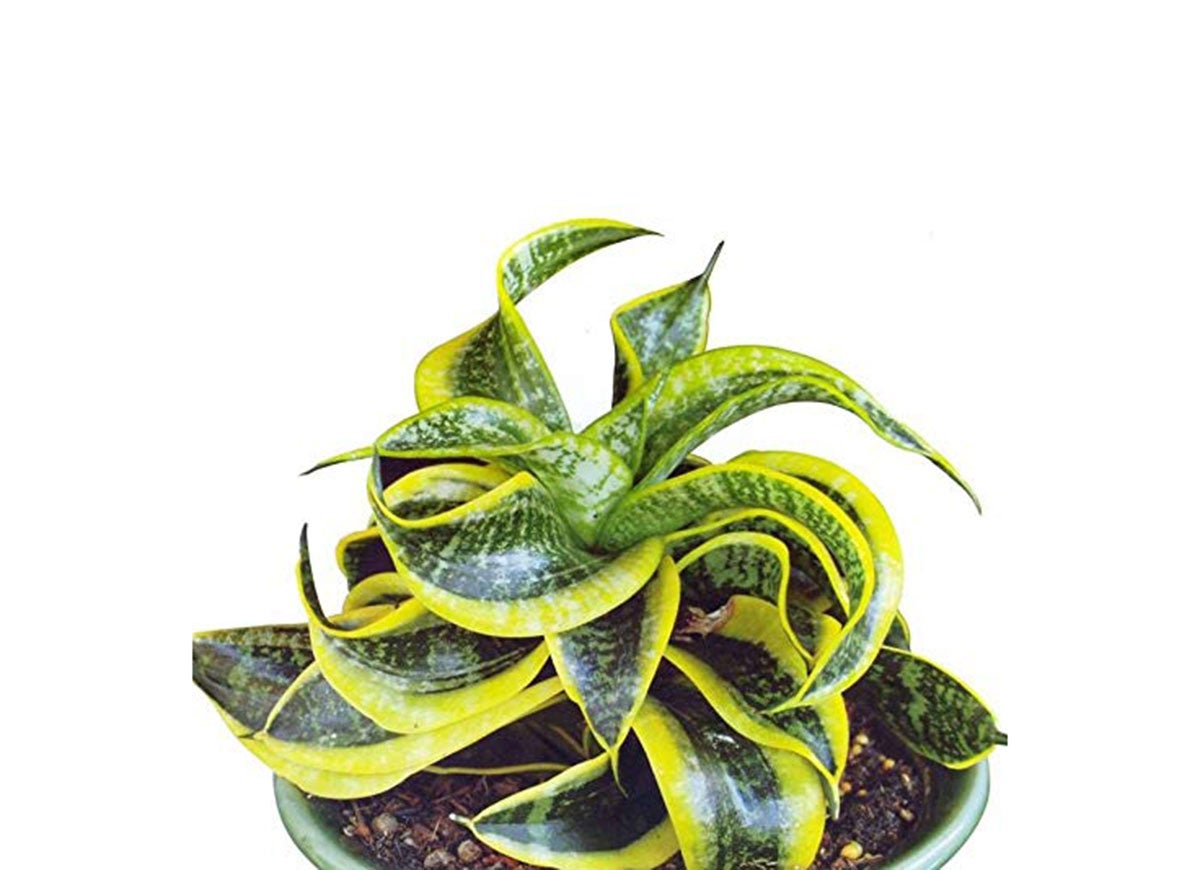
Twisted Sister is a dwarf snake plant that tops out at about 15 inches tall and 10 inches wide. The compact, heavily twisted, curvy foliage features bright green and gold variegation. The leaves take on more of a spreading effect than most other D. trifasciata (formerly Sansevieria) varieties, giving it a rounded or bushy appearance. Pair this one with dark green, upright growers as an easy accent.
Ceylon Bowstring Hemp (D. roxburghiana)
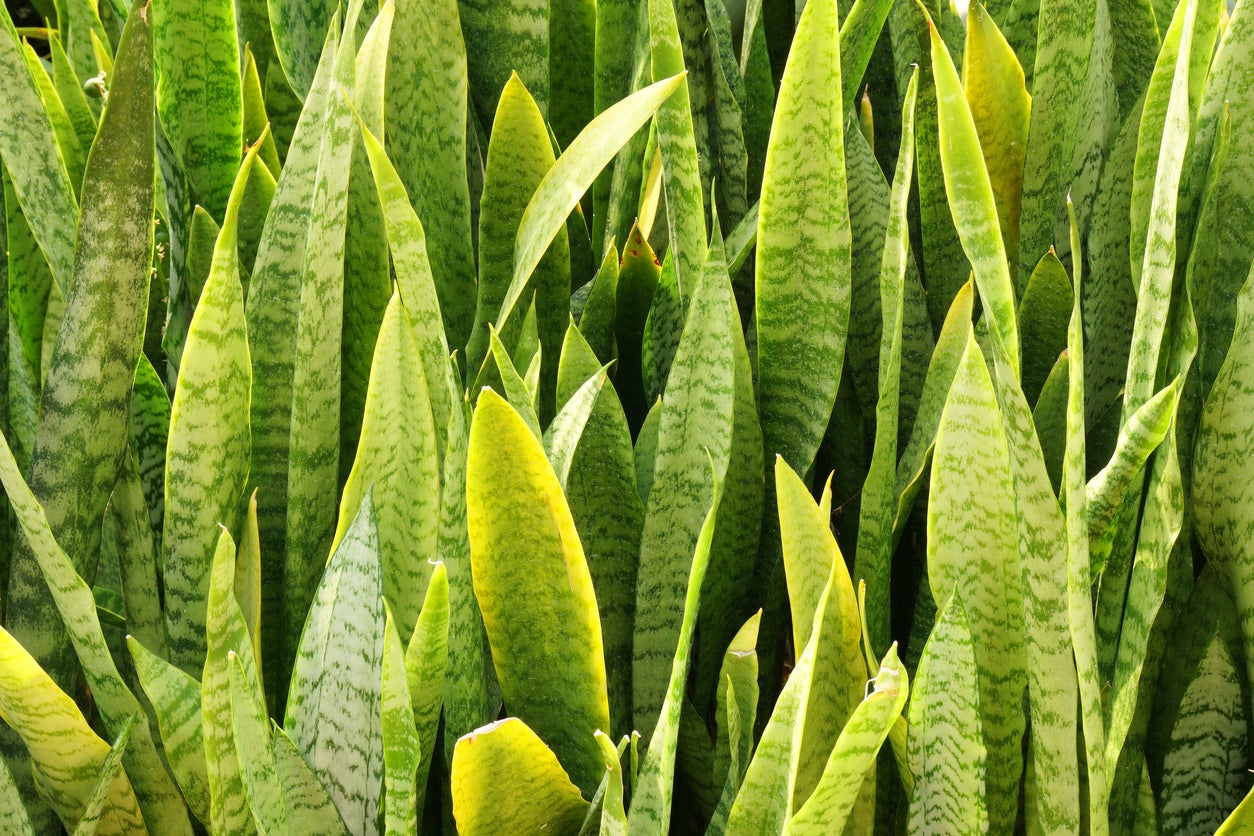
Ceylon Bowstring Hemp has been harvested in the wild for its useful long fibers. This snake plant goes by its former name of Sansevieria zeylanica, S. roxburghiana, or its new classification as Dracaena roxburghiana. The dark green foliage offers excellent ornamental value in a houseplant. The long, sturdy, upright leaves have a distinct sword shape, culminating in a pointed tip. The surface of the leaves is dappled with creamy wave-like stripes.
Ceylon Bowstring Hemp is a flowering snake plant, but it rarely flowers. When it does, the blossoms appear as greenish-white and slightly fragrant. But, buy it for the foliage, as most gardeners will never see this one bloom.

All You Need to Care for Your Lawn & Garden
Keeping your grass green and your plants thriving doesn’t just take a green thumb—it starts with the right tools and supplies.